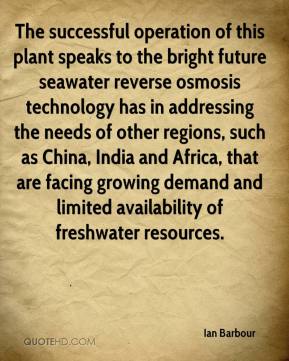Environmental Consequences of Science and Technology
Introduction: The Future of Technology
In Issues In Science And Religion, Ian Barbour explains his perspective on unprecedented powers as an analysis about the future of technology. Three main avenues of thought are considered. First, environmental threats are considered, that are now global and long term. Second, genetic engineering is examined. Third, the destrutive power of nuclear weapoons is discussed.
Ian Barbour

Environmental Degradation
Environmental degradation considers air and water pollution, global threats to climates, species, and renewable/non-renewable resources. These are not mainly the result of dramatic accidents, but rather the cumulative effect of the everyday use of technology, prevailing agricultural and industrial practices and consumer habits. Air pollution has resulted in acid rain and is a major contributor to respiratory diseases and land damage in urban areas. Water pollution is caused mainly from industry and agricultural runoff. Hazardous wastes are generated from chemical industries and industrial waste. Prevention strategies are mainly the introduction of end-of-pipe devices to remove pollutants. Clean-up efforts are costly and have often been resisted, since enforcement has been lax. Pollutants removed from one media are often transferred to another, between air, water and land.
Some global environmental threats are de-forestation, endangered species, ozone depletion, global warming and population growth.
Technology has increased humanity's ability to feed and house the world's population, however the price has been increasing environmental damage. Efforts should be directed toward re-designing technology and reducing consumption rather than just reducing pollutants.
Conversation With Ian Barbour
Science and Technology - Limits to Growth Advocates
The limits to growth debate points to three responses to technology and environmental degradation.
First, the critics of growth maintain that if population and industrial production continue to grow at the present rate, global limits will be exceeded within a few decades. The main limiting factors are agricultural production, non-renewable resources and the capacity of the environment to absorb pollutants.
Second, advocates of growth hold that market mechanisms will provide an automatic adjustment to resource scarcities. Advocates of growth express great confidence in technology to extend existing limits.
Science And Technology - Advocates to Growth
Advocates to growth for Science and Technology believe that advances in tehnological innovations will eventually bring about a utopia, or fulfull a utopian ideal, or at the least benefit the individual and society at some level.
The belief is tht there will be a natural re-balancing of the individual, the environment, and the economic structure in relation to the introduction of a new technology into society at any given time.
As a result, advocates to growth maintain an inherent belief in the natural re-balancing process at all levels and therefore do not see a need for selectivity in terms of individual, religious, socio-economic, or environmental aspects of life in relation to the introduction of new technologies into society.
Religion And Science - Ian Barbour

Science and Technology - Barbour's Perspective - Selective Growth
Barbour is in agreement with the third position of selective growth. Selective growth calls for deliberate policy choices that will not occur from market forces alone. Selective growth will be the result of both individual and social decisions to encourage some kinds of technology and not others. Scarcities would be viewed as a result of maldistribution, institutional deficiencies, and shortsighted technological design, as well as finite resources. 'Whose growth' and 'what kind of growth' become decisive factors. New technologies suitable for a world of resource constraints would be promoted.
Quote - Ian Barbour

Conclusion - Barbour Advocates The Selective Use of Modern Technology
In conclusion, from my perspective, Barbour has engaged in a clear and compelling argument advocating the selective use of modern technology. Concerns in relation to environmental threats, genetic engineering and nuclear weapons have reinforced his analysis of the effect of technology on the environment. Although the perspectives of the critics of growth, and advocates of growth have been discussed, Barbour effectively favours the perspective of selective growth as a progressive resolution to the emerging environmental degadation in the modern world.
Works Cited
Issues In Science And Religion, Harper Collins College Divinity, U.S.A.
April, 1971
Perspectives on Science and Technology?
What is your view on Science and Technology?
© 2014 Deborah Morrison








